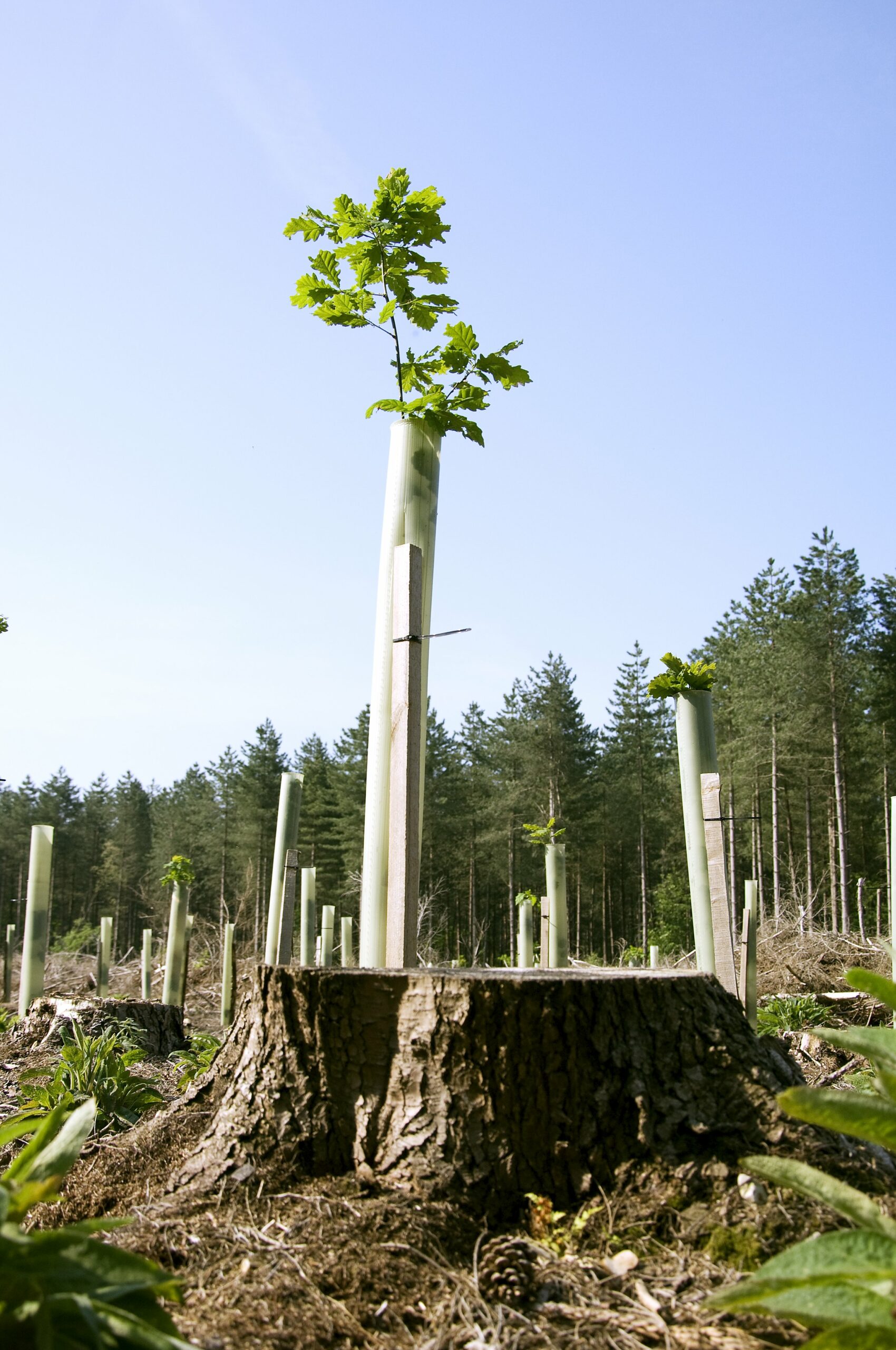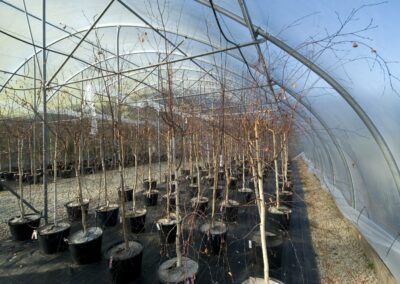EXPLORATION: Mixed species planting for drought adaptation
Project leads Dr George Xenakis, Dr Mike Perks | Forest Research
Lead organisation Forest Research
Collaborators Centre for Sustainable Forests and Landscapes; INRAE, France
Project status Active
Project funding £749,940
Research outcomes Reducing the risk | Adaptation
Context
Climate change is expected to increase the frequency and severity of droughts, posing significant challenges for forest ecosystems. Establishing mixed-species forests may help their ability to adapt to drought conditions. However, there is limited research on how this approach influences drought resilience. Potential benefits include greater diversity of mycorrhizal fungi. The upward movement of water from deeper, moister soil layers to drier upper layers by tree roots may also assist in the establishment of young woodlands, although current evidence remains inconclusive.
This project combines experimental approaches with stakeholder consultations to identify optimal species mixtures for planting, explore species-specific drought responses, and inform practical forest management strategies. The overarching aim is to enhance forest resilience through evidence-based adaptation measures.
Research aims and objectives
Aim:
To assess whether planting multiple tree species together improves drought resilience in newly established forests.
Objectives:
- Identify which combinations of tree species are most effective at resisting drought conditions.
- Experimentally determine how mixed-species forests respond to drought compared to single-species forests.
- Understand how soil moisture dynamics, such as soil hydraulic lift and associations between tree species and myccorhizal fungi, differ in mixed versus single-species forests.
- Provide practical guidance and policy recommendations for forest management based on scientific evidence gathered through research, stakeholder input, and expert consultation.
Expected outcomes
Expected Knowledge and Impact:
- Improved understanding of drought resilience in mixed-species forests, particularly during early establishment.
- Clarified roles of soil hydraulic lift and mycorrhizal associations in water uptake and drought mitigation.
- Evidence-based guidance for forest managers and policymakers on optimal species mixtures to enhance drought resilience.
- Enhanced international collaboration through participation in global research networks.
- Increased collaboration and knowledge sharing among scientists, forest managers, and policymakers through stakeholder engagement.
Expected Outputs:
- Scientific publications detailing findings from experimental and remote sensing studies.
- Practical guidelines and policy recommendations for mixed-species planting for drought adaptation.
- Establishment of long-term experimental research facilities for ongoing studies and demonstration purposes.
- Production of accessible communication materials, including webinars, videos, and trade magazine articles, to disseminate results broadly.

New Oak as part of regeneration of woodland.
Title image: Crown Copyright. Forest Research – George Gate
Body image: Crown Copyright. Forest Research – Louise Gathercole
Glossary & Key Terms
Mycorrhizal associations
Symbiotic relationships between fungi and plant roots.
Mycorrhizal fungi
Soil-based fungi which interact with tree roots and support trees in accessing soil nutrients.
Soil hydraulic lift
The process by which some deep-rooted plants take in water from lower soil layers and exude that water into upper, drier soil layers.
Share this project on social media
Related Projects
Our Partners
Social media
Explore
Newsletter
Contact
© 2022 Centre for Forest Protection. All rights reserved.


